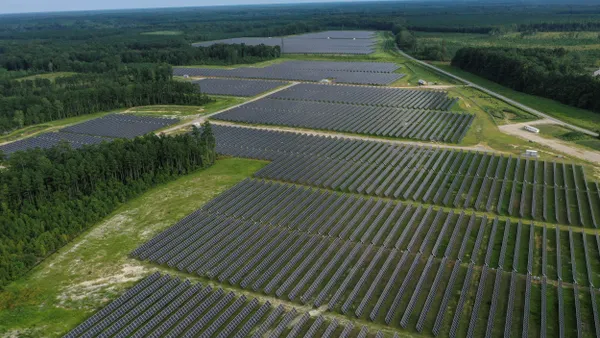Dive Brief:
- The United States can increase its use of renewables in its energy mix from 7.5% in 2010 to 27% in 2030 according to a new report, but it will take billions of dollars more in annual investment. Those dollars spent, however, will be balanced out by health and environmental benefits of reduced carbon emissions.
- The International Renewable Energy Agency (IRENA) report also said the U.S. can increase its use of renewable energy in power generation from 14% to almost 50%, making it the world’s second largest renewable energy user after China.
- PV Magazine reports the higher renewables share could result in an annual savings of $30 to $140 billion by 2030 when accounting for health and reduced emissions.
Dive Insight:
The United States' current energy policies are on track to have 10% renewables by 2030. But according to new analysis from IRENA, by increasing annual investment by $38 billion — raising it to $86 billion each year — the country could reach 27% renewables by 2030.
If that extra investment seems steep, the agency noted the higher renewable share could save $140 billion annually when accounting for factors like human health and reduced emissions.
“As the second largest energy consumer in the world, the U.S. must continue to play a leading role in the global transition to a sustainable energy future,” said IRENA Director-General Adnan Amin. “The recent agreement between the US and China to reduce greenhouse gas emissions is a groundbreaking step, but this report aims even higher, showing that more can be done at limited cost.”
The report looks at the potential for the U.S. and other countries to scale up renewable energy in energy systems, including the power, industry, buildings, and transport sectors.
"Market certainty needs to be created through policy support, which must be consistent, predictable and long-term," according to the report's executive summary. "Policies are particularly needed to attract investments in grid transmission and biomass logistics ... The US needs to adopt systems that better account for the external costs of using fossil fuels."














